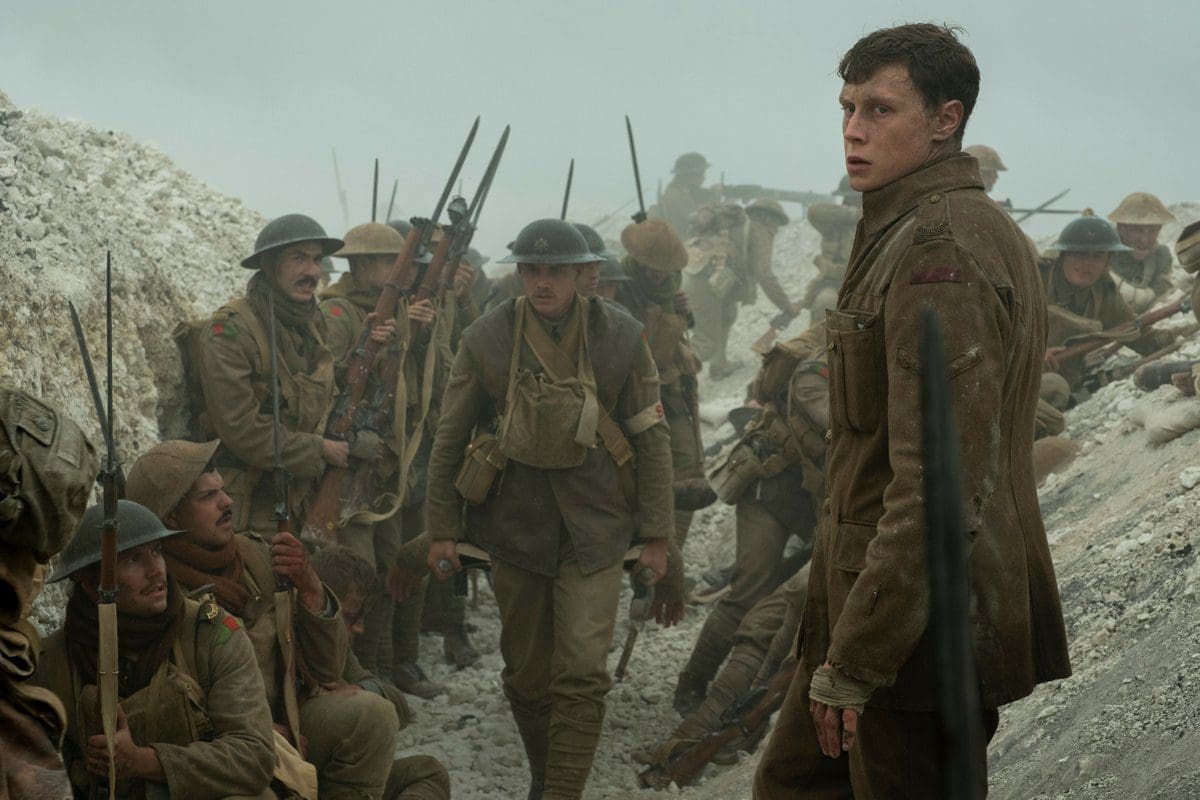
Bringing the experience of war to life on the big screen is no easy task, as there are some key components needed to make viewers genuinely feel like they are on a battlefield. There not only has to be the loud and explosive battles that speed up a viewer’s pulse, but also more quiet and suspenseful moments that make viewers grip their seats in worry about what’s around the next corner. There has to be a strong personal bond not only between the characters to create a strong emotional resonance, but it also has to translate to viewers so that when things don’t end up as planned, it really has an impact. There are honestly so many moving parts to depicting war that the choreography, performances, and filmmaking have to be quite ambitious—especially when you want to make it all look as if it’s done in one take, like writer-director Sam Mendes does in his WW1 epic, 1917
Now, Mendes isn’t the first filmmaker to create this one-shot experience, as we’ve seen it in films like Alfred Hitchcock’s Rope and Alejandro G. Innarritu’s Birdman or (The Unexpected Virtue of Ignorance). Even in the gaming world, gaming writer/director Cory Barlog used the one-take tactic to immerse players into the journey of a father and son in the 2018 hit, God of War. Mendes’s use of it, however, feels so much grander than ever before and the film lives and breathes his ambitious vision in a way that immerses viewers in the middle of a heartfelt and heart-pounding race against time through enemy territory.
The film’s central journey seems oddly simple on the surface, with the film following two British Lance Corporals, Blake (Dean-Charles Chapman) and Schofield (George MacKay), as they are sent off to deliver a message to stop 1,600 men from falling into a deadly trap. However, war is never simple. The two face countless obstacles behind enemy lines that always make the odds of them not only completing their mission while still surviving that much slimmer.
Mendes’s one-take filmmaking makes viewers feel as if they are walking along the battlefield and carrying the same worry and paranoia as Schofield throughout the film. Every time they’re looking at the ridge ahead, just off-screen, it’s hard not to find yourself looking at the rolling hills behind them to make sure there isn’t any kind of danger in the distance. There’s also a great variety of danger throughout their journey, some as big as a fallen plane crashing towards them and others as small as rats and tripwires in an enclosed mine. Even the things that simply make them lose time to deliver the message are full of tension and the film does a great job getting viewers wrapped up in their mission because of how important and personal it is.
The concept of losing a large group of soldiers is something anyone can understand as important and devastating, but the two soldiers’ mission is made much easier to connect to because Blake is also going to save his brother. The second he receives the news about his brother being among the 1,600 men, Blake has this drive in getting there that’s very real. It’s the easiest kind of driving force for viewers to feel and *spoiler* by the time some kind of a reunion comes, it really hits an emotional level that brings out such genuine human emotion. Not to mention, Blake and Schofield are easy to relate to and are very real in how they think about the situation they’re in and the war stories they tell. Chapman and McKay give really great performances, that stem from the great script they’re given from Mendes and fellow writer Krysty Wilson-Carins, and that are elevated even higher when you realize that most of what they had to do is done in one take.
It’s actually jarring to see so much of the film be clearly done in one take because of how Mendes has so many moving parts going both on and off screen. Seeing soldiers huddled within a trench as the two walk past them and, as seen in the trailer, Schofield running across an ongoing battle with explosions and soldiers running and falling behind him is pretty mind-blowing. Even the way Mendes uses sounds and soldiers calling out to one another in the background creates this very organic environment that has a sense of realism. In total, there were maybe about five times the cuts that Mendes implemented were noticeable, because of some fades to black and a few obvious moments of CGI. However, as a whole, the experience is incredibly smooth.
The cinematography from the legendary Roger Deakins is likely some of his best work, as he gives each environment its own unique look and feel. In some ways, 1917 almost feels like a video game being played out on the big screen with how Deakins captures each environment and it makes the pacing much smoother. With each new area, you can feel the two soldiers progressing towards their final destination and even the challenges and obstacles they face become more difficult and taxing. Blake and Schofield’s journey is truly epic in every sense of the word because of all of the vivid detail and emotion that’s put into it—not to mention, there are some pretty epic cameos.
Seeing them run into the likes of Colin Firth and Benedict Cumberbatch was great and I wish I could’ve recorded the cheers and excitement that filled my theater the second they came into frame. They all gave great performances and, especially in the case of Andrew Scott, added in some welcomed humor that hit surprisingly well. The moment with Richard Madden is easily one of my favorites, though, as it’s easily one of the most heartbreaking moments of the film because of how great his performance is. And while I won’t say where he comes into play, it’s definitely a pivotal moment that he absolutely nails.
In short, 1917 is sheer brilliance in its execution and is easily one of the greatest war films of all time. Mendes proves himself to be a high-caliber filmmaker with how he depicts the harrowing acts within war in one take and McKay gives one of my favorite performances of 2019. 1917 is definitely a front-runner, in my mind, for the already-competitive awards season we have upon us and one that I’ll surely be rooting for to win it all.

